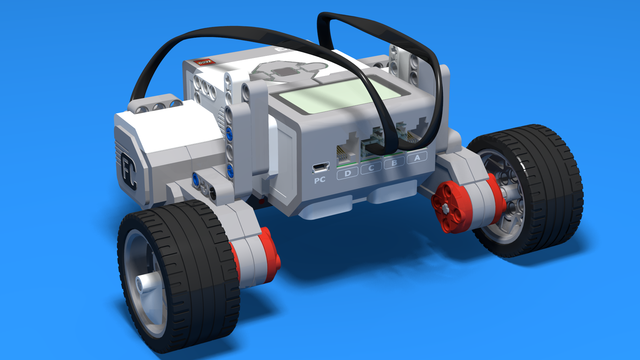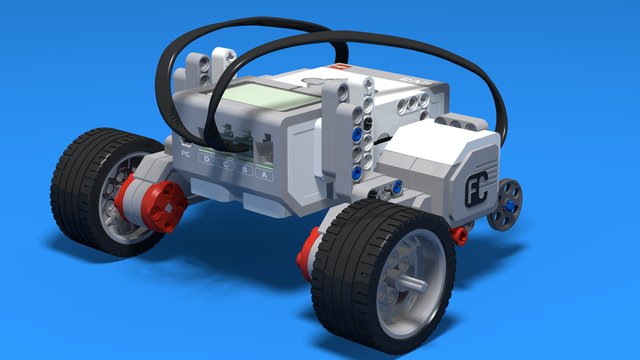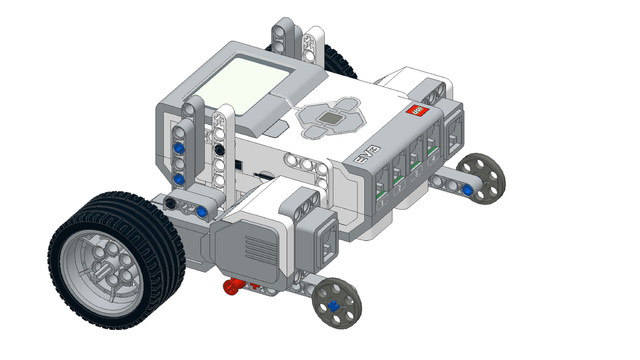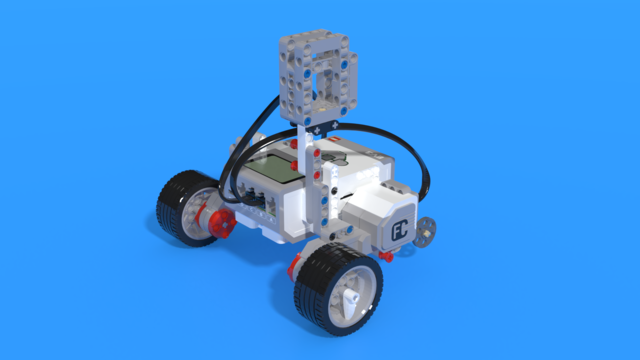What a teacher should know when giving tasks to students
- #372
- 04 Feb 2017
- 2:39
Clearly designate the starting position
If the floor is tiled, use a few tiles. If the floor has lines, use a few lines. Always mark the starting and the final lines for reference.
Students will forget where exactly the start and the end is and you, as a teacher, must mark the start and the end on the floor.
Manage students to take turns
Use one testing area per 10-12 students and teach them to respect a waiting line.
The distance and when the task is solved
The task of 50 cm (20 inches) is exemplary. Choose a distance on your own or even negotiate it with the students. Any distance will work well, especially if it has a meaning.
A distance with a meaning is the height of the student: "Move as far with the robot as is your height".
Be strict with the task
You must decide what range of distances count as solved task. Is 42 cm an acceptable solution? Is 49 cm acceptable? Is 55 cm acceptable?
Decide that and teach your students precision and that you have your criteria for a successfully solved challenge.
Also, make sure you encourage your students to try again and again.
English
It's important to mention a few notes for the teacher when implementing this task for moving exactly 50 cm in a group of students. And there are some very important things that you should know.
Three things for the teacher. When doing this task and the task is to move exactly 50 cm or 20 in with the robot you should always clearly mark the starting position. You can use an electrical tape and just mark the starting position. If you're doing this task on the floor and on the floor there might be some natural markers like different tiles for example, it's again a good idea to mark the starting position with an electrical tape. Then, after you have the starting position for each 8-10 students in your group you should have one base. So, if you have 20 students in a group just mark two starting positions and you can have two bases. And third, try to teach the students to take turns when starting the robot. So, they are taking the robot, moving it, programming it with the computer, returning it back to base and starting. And they should learn to take turns when doing this task. And you can then see and try to be stricter about the exact distance. So, if the task is to move 20 in or 50 cm and the robot moves like 18 in or 45 cm that's not a completed task. But if it moves 49.8 cm probably that's okay. So, you can consider this as solved challenge, a completed task. Again, the distance doesn't matter. You can set the distance to a meter or 40 cm, or you can try to make it funnier like 77.7 cm or 44.4 in or something of that sort. So, you can play with the numbers. But try to be a little bit stricter and give the students some time to experiment with the robot.
Courses and lessons with this Tutorial
This Tutorial is used in the following courses and lessons

Robotics with LEGO - Level 1.0 - Adventure in Space
The first level of the Robotics with LEGO curriculum for students in fifth to twelfth grades.
Various constructions with robots are built. Learn how to control the motors so that the robot navigates around the Moon and Earth in various ways. Getting to know the first two sensors. The robot can feel its surroundings with the help of the Touch sensor and avoid obstacles.
The Ultrasonic distance sensor can help the robot avoid obstacles. Students work with concepts like loop, degrees and medium motor. Robots can now do two different actions at the same time - while solving missions on a field, the third motor clears detected obstacles.
- 126
- 123:52
- 150

Lesson 1 - Moving like a Yo-Yo
Introduction
Today, you will get to know your classmates and your teacher, learn how the lessons are conducted, construct your first robot, and learn how to program it to move. The end goal of this lesson is to make the robot move like a Yo-Yo. How does a Yo-Yo move?

If you have ever owned a Yo-Yo, you know that it's meant to fall down and rise back up to your hand. But in order for it to move successfully, we need to move our arm in such a way that we provide it with the required velocity. Otherwise, it will decrease the distance on the way back up on each drop until it stops.
Try to make a good impression on the rest of your class, because you will be doing this course with them until the end.
- 19
- 4
- 9
- 3d_rotation 1

EV3 Phi. Introduction to robotics with LEGO Mindstorms
The things that you will be able to do with your EV3 robot by the end of this course are:
Freely move your robot towards desired target;
Avoid obstacles on the path of your robot using sensors;
Follow lines of any shape;
Detecting and picking up objects of any kind;
- 92
- 220:20
- 36

First challenge - Yo Yo task
Overview of what is going to happen that part of the lessons.
- 14
- 0
- 4
- 3d_rotation 0

Level A1. Introduction. Robotics with LEGO
Introduction to robotics - The first level of the Robotics with LEGO curriculum for students in second, third or fourth grades. A journey in space, with robots. Various constructions with robots are built. Learn how to control the motors so that the robot navigates around the Sun, the Moon and Earth in various ways. Getting to know the first of the sensors. The robot can feel its surroundings with the help of the Touch sensor and avoid obstacles.
- 142
- 133:42
- 187

Lesson 1 - Moving forward
Your LEGO sets and the workplaces must be in exemplary shape. Beyond that, you must do one more thing.
- 12
- 5
- 8
- 3d_rotation 1

Python with LEGO Mindstorms EV3 - Level 1
The course introduces students to the programming language Python. We use LEGO Mindstorms EV3 Robots. Python is a popular programming language. It could be used for introducing students to programming, for academic studies, for developing machine learning algorithms and as a general-purpose language.
During the course, students learn how to read and how to develop Python programs. They use an Integrated Development Environment called Visual Studio Code. Robots are programmed to perform interesting and funny tasks like "bringing you water". The level ends with competition on a playing field with boxes.
- 74
- 28:18
- 114

Lesson 1 - Beverage Assistant
Introduction
Anyone who decides to develop themselves in the field of robotics does so because they have been dazzled by the possibilities of automation in everyday life.
Whether you wish to build a multitude of small robots that work together to make your life easier or a big humanoid robot that does your homework for you, you have also come here to create your own robots.
In order to create complex robots, we first need to build simpler ones but this does not mean that they cannot be functional. "Paalia Technology" is one of the companies that began manufacturing and selling robots that are programmed to be waiters and today we will make a simple robot that serves tables today.
For most of us, these are the first steps into robotics, which is why we will start with a simple platter robot that moves to a specific location and returns.
In every lesson, we will learn how to make increasingly more complex robots and you will be able to automate more aspects of your life.

- 14
- 4
- 6
- 3d_rotation 1